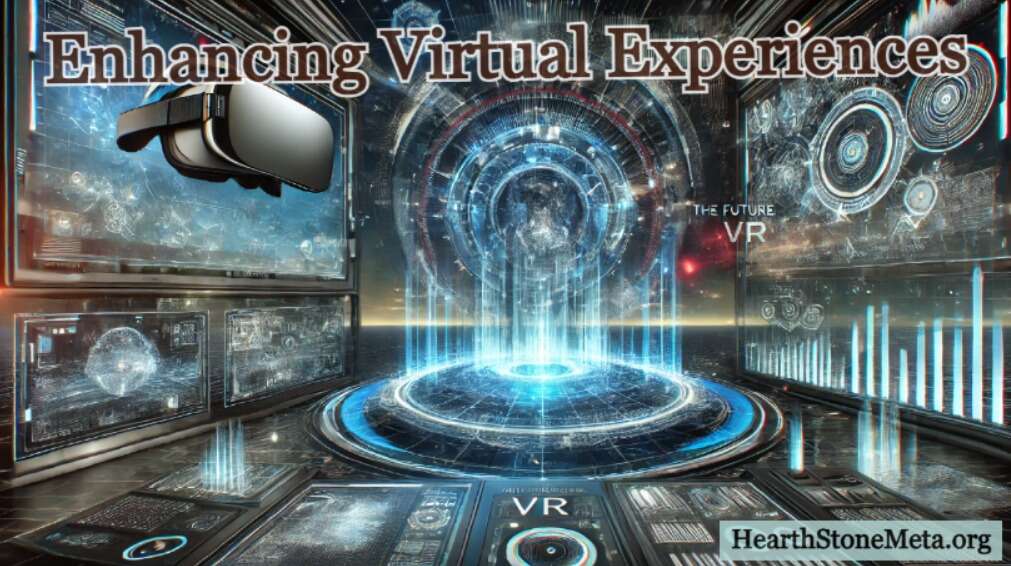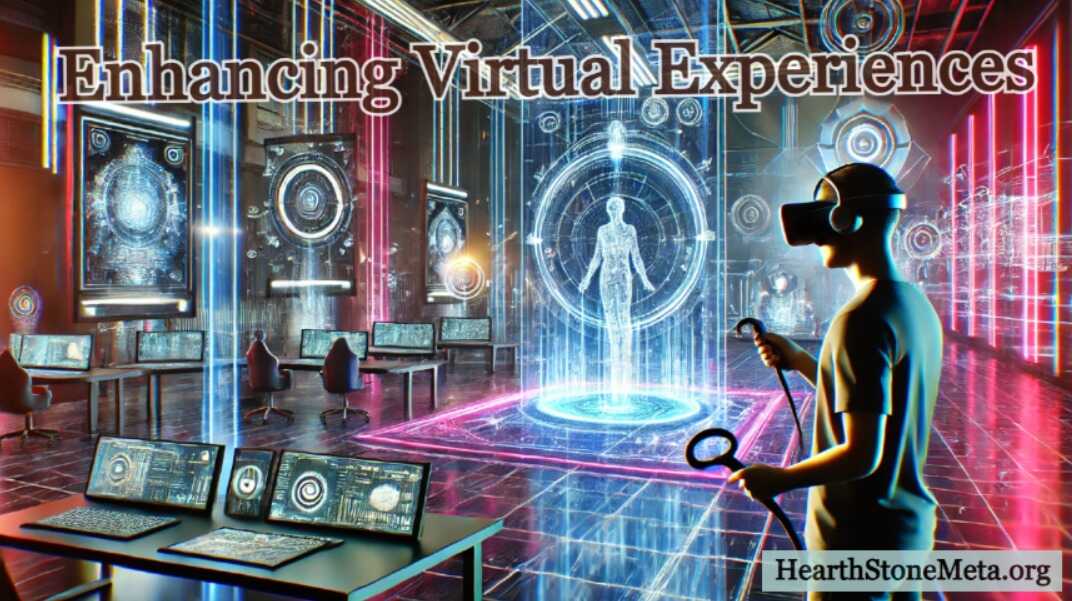Introduction
In the fast-evolving world of digital technology, enhancing virtual experiences has become a top priority for developers, designers, and content creators.
Whether in gaming, virtual reality (VR), augmented reality (AR), or live-streamed events, immersive special effects play a crucial role in making these experiences more engaging and lifelike.
In this article, we will explore how immersive special effects contribute to enhancing virtual experiences, the latest technological advancements, and how businesses and developers can leverage these innovations.
Understanding the Importance of Enhancing Virtual Experiences

Virtual experiences are no longer limited to simple 3D graphics. Today, users expect highly interactive and realistic environments that create a sense of presence.
This is particularly crucial in industries such as gaming, education, real estate, and live events.
By focusing on enhancing virtual experiences, businesses can offer users a heightened level of engagement, leading to better customer satisfaction, increased brand loyalty, and competitive advantages.
Key Components of Immersive Special Effects
To enhance virtual experiences, developers use various elements that contribute to realism and interactivity. Here are some of the most important components:
1. High-Quality Graphics and Textures
Realistic graphics with high-resolution textures help create a believable virtual world. Advances in rendering technology, such as ray tracing, allow for ultra-realistic lighting, shadows, and reflections, making virtual environments more immersive.
2. Real-Time Physics and Animation
Accurate physics simulations enhance interactions within a virtual world. From realistic character movements to object destruction and fluid dynamics, physics-based animations contribute to a more engaging experience.
3. Spatial Audio and 3D Soundscapes
Sound plays a vital role in immersion. Spatial audio technology enables 3D soundscapes, allowing users to perceive the direction and distance of sounds realistically.
This is essential in VR gaming, live concerts, and virtual training simulations.
4. Haptic Feedback and Sensory Stimulation
Haptic technology replicates the sense of touch through vibrations and force feedback. Devices like VR gloves, haptic suits, and controllers enhance the sense of realism by allowing users to “feel” virtual interactions.
5. AI-Driven Interactivity and Adaptive Environments
Artificial intelligence (AI) enhances virtual experiences by enabling adaptive environments and intelligent NPCs (non-player characters).
AI-driven interactions make virtual worlds feel more dynamic and responsive to user actions.
Technologies Powering Immersive Special Effects
1. Virtual Reality (VR) and Augmented Reality (AR)
VR and AR technologies have significantly contributed to enhancing virtual experiences. VR fully immerses users in a digital environment, while AR overlays digital elements onto the real world, creating a blended experience.
2. Motion Capture Technology
Motion capture (MoCap) is widely used in the gaming and film industries to create realistic character animations.
This technology records human movements and translates them into digital avatars, enhancing realism.
3. Cloud Computing and Edge Rendering
Cloud-based rendering solutions allow developers to create high-quality virtual environments without the need for expensive hardware. Edge computing reduces latency, ensuring smoother real-time interactions.
4. AI-Powered Visual Enhancements
AI algorithms enhance virtual experiences by improving image quality, generating realistic textures, and automating complex animations.
AI-driven tools like Nvidia’s DLSS (Deep Learning Super Sampling) optimize performance while maintaining high visual fidelity.
Applications of Enhanced Virtual Experiences
1. Gaming and eSports
The gaming industry is at the forefront of immersive special effects. Titles like Cyberpunk 2077 and Half-Life: Alyx showcases how cutting-edge visuals, physics, and AI-driven NPCs can transform gaming experiences.
2. Virtual Training and Simulations
Industries such as healthcare, aviation, and military training use VR simulations to provide hands-on learning experiences in a safe environment.
Enhanced visuals and physics-based interactions help trainees practice real-world scenarios.
3. Virtual Events and Concerts
The rise of metaverse platforms has led to virtual concerts and events featuring stunning special effects. Companies like Epic Games have hosted large-scale virtual concerts featuring artists like Travis Scott and Ariana Grande.
4. Architectural Visualization and Real Estate
Real estate developers and architects use VR to create immersive property tours. High-quality 3D renderings and real-time walkthroughs allow potential buyers to explore properties remotely.
5. Healthcare and Therapy
VR is also transforming mental health and physical therapy. Immersive environments help treat PTSD, anxiety, and phobias, while VR-assisted rehabilitation supports recovery for stroke and injury patients.
Best Practices for Implementing Immersive Special Effects
To effectively enhance virtual experiences, developers should follow these best practices:
1. Optimize Performance for Smooth Interactions
Immersive special effects should not come at the cost of performance. Developers must optimize rendering processes and minimize latency to ensure seamless user experiences.
2. Maintain a Balance Between Realism and Usability
While hyper-realistic graphics are impressive, they should not overshadow usability. Ensuring intuitive navigation and interactions is crucial for an engaging experience.
3. Use AI to Personalize Experiences
AI-driven personalization enhances user engagement by adapting virtual environments based on individual preferences and behaviors. This is particularly useful in gaming and e-commerce.
4. Focus on Accessibility
Enhancing virtual experiences should be inclusive. Features like voice control, customizable interfaces, and adaptive controls help make virtual experiences accessible to all users.
The Future of Enhancing Virtual Experiences

The future of immersive special effects is promising, with advancements in AI, VR, and AR continuing to push boundaries.
Emerging technologies such as brain-computer interfaces (BCIs) and volumetric video capture will further enhance realism and interactivity.
As virtual experiences become more sophisticated, industries will need to invest in cutting-edge technology and innovative design to stay ahead of the competition.
Whether in entertainment, education, or healthcare, enhancing virtual experiences will remain a key factor in shaping the digital landscape.
Conclusion
Enhancing virtual experiences is not just about better visuals—it’s about creating deeply immersive, interactive, and meaningful digital environments.
By leveraging advancements in VR, AI, haptics, and spatial audio, developers can craft experiences that captivate users across multiple industries.
As technology continues to evolve, the possibilities for immersive virtual experiences are limitless.
Whether in gaming, business, or healthcare, investing in high-quality special effects will define the future of digital interactions.
Would you like me to refine or expand any section further?
